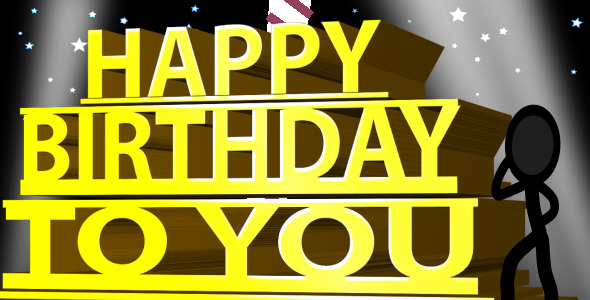Happy Birthday Ecard Biography
The greeting card metaphor was employed early in the life of the World Wide Web. The first postcard site, The Electric Postcard was created in late 1994 by Judith Donath at the MIT Media Lab. It started slowly: 10-20 cards a day were sent in the first weeks, 1000-2000 a day over the first summer, and then it gained momentum rapidly. During the 1995-96 Christmas season, there were days when over 19,000 cards were sent; by late spring of 1996 over 1.7 million cards had been sent in total.The source code for this service was made publicly available, with the stipulation that users share improvements with each other. The Electric Postcard won numerous awards, including a 1995 GNN Best of the Net award.MIT’s postcards and remained the dominant and the only documented E-card service until the late fall of 1995. In Nov 1995,
Awesome Cyber Cards and also then known as marlo.com (located at marlo.com until Oct 2010, now moved), began developing the Internet greeting card, a digital Internet card including a fixed or suggested greeting as well as an image.
When the Internet Archive began capturing Web sites across the Internet in the fall of 1996, it created a reservoir of information about E-card development by preserving Internet history from that time and from earlier time-marked Internet pages captured at that time. The Awesome Cards web pages, captured on Nov 10,1996 and available at the Wayback Machine demonstrate its development of the cyber greeting card through the year 1996 as one drills down through its card collections.Specifically, the holiday collections from earlier that same year give a virtual time-stamp,.
of greeting card development, starting with Valentines with fixed or semi-fixed greetings in February 1996 and progressing through greeting cards with changeable suggested greetings by the Thanksgiving collection.By mid-1996, a number of sites had developed E-cards.
By mid October 1996, directly emailable greeting cards and postcards ("Email Express") were developed and introduced by Awesome Cards, based on new capabilities introduced in the Netscape 3.0 browser. This is the first time the E-card itself could be emailed directly by the card sender to the recipient rather than having an announcement sent with a link to the card's location at the E-card site.
Between Sep 1996 and Thanksgiving 1997,
a paper greeting card company named Blue Mountain developed E-cards on its web site. Blue Mountain grew quickly by allowing visitors to create greetings for others to use. Blue Mountain further expanded when Microsoft promoted its service on its free Hotmail service. This affiliation ceased and Blue Mountain sued Microsoft in Nov 1998 for putting email card announcements from it and other E-card companies in the junk folder of its Hotmail users.By 1999, major capital was starting to flow into the Internet, beginning the dotcom boom. Of the E-card sites, Blue Mountain Arts was noteworthy in this period for its sale in October 1999 to Excite@Home for $780M (which represent a price of $71 per unique monthly user) The transaction has been referenced by CNN and Business 2.0 as evidence of the Dot-com bubble. On September 13, 2001, three weeks before filing for bankruptcy on October 1, 2001, Excite@Home sold BlueMountain.com to American Greetings for $35M, or $3.23 per unique monthly user.
The web site BlueMountain.com remains a large web site, primarily focused on E-cards. In June 2008, JustAnotherDotCom.com purchased the free E-card site Greeting-cards.com and added it to their own greeting card site, which made them one of the largest E-card sites in the world[citation needed].
Originally, most E-cards were free, often sponsored by advertising. While free greeting cards are still the most prevalent and popular, some sites charge for either all E-cards or special premium E-cards. Others charge an annual membership which enables members to send cards for the duration of the membership
Several non-profit organizations offer free E-cards as a way of having a supporter introduce the organization to another individual. In 2006, SOS Children's Villages - USA began offering free E-cards for many occasions such as birthdays, thank yous, and Mother's Day.
Happy Birthday Ecard Happy Birthday Cake Quotes Pictures Meme Sister Funny Brother Mom to you to me Pictures
Happy Birthday Ecard Happy Birthday Cake Quotes Pictures Meme Sister Funny Brother Mom to you to me Pictures
Happy Birthday Ecard Happy Birthday Cake Quotes Pictures Meme Sister Funny Brother Mom to you to me Pictures
Happy Birthday Ecard Happy Birthday Cake Quotes Pictures Meme Sister Funny Brother Mom to you to me Pictures
Happy Birthday Ecard Happy Birthday Cake Quotes Pictures Meme Sister Funny Brother Mom to you to me Pictures

No comments:
Post a Comment